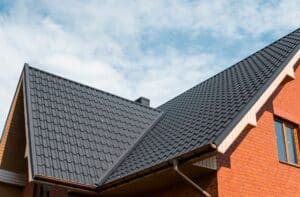Owning a tile roof comes with a host of benefits, including durability and aesthetic appeal. However, like any roofing material, tile roofs can encounter their share of problems. From cracked tiles to moss growth, understanding these issues and knowing how they can be fixed is essential for maintaining your roof’s performance and longevity.
Florida’s climate presents unique challenges for tile roofs. The combination of intense sun, heavy rain, and occasional storms can contribute to various roofing problems. Left unaddressed, these issues can lead to costly repairs and even structural damage to your home. Being proactive and addressing problems as they arise can save you a lot of trouble in the long run.
In this article, we will explore some of the most common problems associated with tile roofs and share how we tackle these issues effectively. By understanding the root causes and our methods for fixing them, you’ll be better equipped to keep your tile roof in top condition for years to come. Let’s dive in!
Cracked or Broken Tiles
Tile damage is a common issue, especially in Florida, where extreme weather conditions are frequent. Tiles can crack or break due to various reasons, such as heavy impact from falling debris, temperature changes causing expansion and contraction, or simply age and wear. Wildlife, like birds or squirrels, can also contribute to tile damage.
To identify broken tiles, we carefully inspect the roof for visible signs of damage. This includes looking for cracks, chips, or entirely missing tiles. Sometimes damaged tiles are easy to spot, while other times, they might be hidden and require a more thorough inspection.
Replacing broken tiles involves a precise process to ensure the new tiles blend seamlessly with the existing roof. We start by removing the damaged tiles carefully without affecting the surrounding ones. Then, we replace them with tiles that match in shape and color. Ensuring proper alignment and sealing is crucial to prevent water infiltration and maintain the roof’s protective qualities.
Leaks and Water Damage
Leaks can be particularly troublesome for tile roofs. Common sources of leaks include damaged or displaced tiles, deteriorated flashing around vents and chimneys, or clogged gutters that lead to water pooling. In Florida, heavy rains can exacerbate these issues, making early detection and repair critical.
Our process for detecting leaks begins with a detailed inspection of the roof. We look for visible signs of water damage inside the home, such as water stains on ceilings and walls. Outside, we check for any cracked or missing tiles, damaged flashing, and examine the gutters for blockages.
Once we identify the source of the leak, we take steps to repair it. This typically includes replacing any damaged tiles and resealing areas around the flashing. Cleaning out the gutters and ensuring proper water flow helps prevent future leaks. By addressing leaks promptly, we help safeguard the structural integrity of your home and prevent more serious water damage.
Moss, Algae, and Mold Growth
Moss, algae, and mold can become significant problems for tile roofs, particularly in Florida’s humid climate. These growths can trap moisture against the tiles, causing them to deteriorate over time. Mold, in particular, can pose health risks if it makes its way into your home.
The issues don’t stop at simply being unattractive. Moss and algae can weaken the tiles, leading to cracks and breaks, while mold can create slippery surfaces, posing a safety hazard. To prevent these problems, it’s crucial to keep your roof clean and free from unwanted growth.
Our effective methods for addressing moss, algae, and mold start with a thorough cleaning. We use specialized solutions that eliminate these organisms without harming the tiles. Regular inspections and cleanings help keep these growths at bay. We also recommend trimming overhanging branches to reduce shade and improve ventilation, which can significantly reduce the likelihood of moss and algae returning.
Improper Installation and Poor Design
Improper installation and poor design can lead to multiple issues with tile roofs. These problems can include uneven tiles, inadequate drainage, and weak structural support. Such issues often stem from hiring inexperienced or unqualified installers.
Problems from poor installation may include tiles that do not align correctly, leading to gaps that allow water to penetrate. Poor design can result in insufficient ventilation, causing moisture buildup and contributing to mold and mildew growth.
To rectify installation issues, we start by conducting a comprehensive inspection to pinpoint the exact problems. We might need to realign tiles, replace improperly installed components, and ensure the roof’s overall structure is sound. Improving roof design includes proper ventilation installation and enhancing drainage systems. These improvements help extend your roof’s lifespan and boost its overall performance.
Conclusion
Tile roofs may encounter various problems, but knowing the common issues and how to address them can make a big difference. From cracked tiles and leaks to moss growth and improper installation, each issue requires a targeted approach to ensure your roof stays in top shape. Regular inspections, proper maintenance, and timely repairs are key to extending the life and effectiveness of your tile roof.
Ready to keep your tile roof in excellent condition? Contact Stratus Roofing for professional help. We have the expertise to handle all your Orlando residential roofing needs efficiently. Don’t wait for small issues to become big problems. Reach out to Stratus Roofing today for a comprehensive roof checkup and maintenance service!







